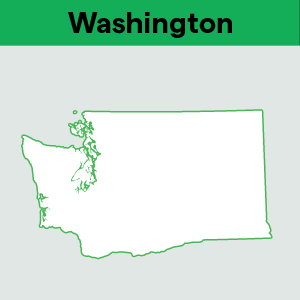Athleisure and sales tax
by November 1, 2024
In recent years, athleisure has transformed from a niche fashion trend into a mainstream movement that blends comfort, functionality, and aesthetics. With the growing popularity of activewear—whether at the gym, running errands, or lounging at home—many consumers find themselves embracing a wardrobe that prioritizes both performance and style. But as the athleisure craze expands, so does the complexity of its associated regulations, particularly when it comes to sales tax.
Changes in buyer behavior
Over the last five years, traditional brick and mortar, digital first, and omnichannel retailers have reinvented the online shopping experience to meet consumer expectations. Well-positioned for the shift in buying behavior are retailers who’ve invested time, energy, and money into building experiences that blend in-person shopping with online.
For instance, to recreate an in-store experience that allows customers to try items on before purchase, jewelry brand Kendra Scott launched a new “Virtual Try-ON” platform that leverages augmented-reality (AI), machine-learning (ML), and computer-vision. Similarly, Shopify saw conversion rates increase 250% after implementing a way for merchants to add a 3-D experience to their pages. Other experiences, such as buy online, pick up in store (BOIPIS) have increased in popularity, growing 28% YoY in February of 2020.
This new trend in buying behavior has also impacted the apparel industry. Even considering most consumers prefer to try on clothing before making a purchase, the apparel industry recorded a 49% increase in online orders globally in Q2 2020. As stores slowly reopen, these trends don’t appear to be slowing, which indicates how much consumers enjoy the convenience and safety of shopping from home.
This massive shift in buying behavior heavily impacted the active apparel category, where globally, it saw a 95% increase in overall orders with a corresponding 103% jump in the U.S. Additionally, companies such as Nike, saw as much as an 82% jump in digital sales in their first quarter ending Aug. 31.
What are people buying online in the first place?
It’s apparent why online retail is experiencing hyper-growth, but what are people buying online? In short, everything. For instance grocery delivery increased 57 percent in the first quarter of 2020 at the onset of the pandemic.
In this blog post, we’ll discuss the athleisure wear sub-category and how retailers should evolve their thinking around new challenges such as sales tax compliance.
As the pandemic forces people to shelter in place, it’s accelerated consumers’ appetite for a more seamless way to merge and manage their home and professional lives. Part of this means blurring the lines between “in-home” and “out of home” attire. To do this, many consumers are flocking to athleisure which helps them consolidate their wardrobes whilst remaining fashion-forward with highly functional clothing.
Athleisure wear is essentially apparel that doubles as active and leisure wear combining both fashion and function making it versatile enough to be worn for exercise, home, or the (home) office. Examples of athleisure are: hoodies, joggers, yoga pants, sneakers, t-shirts, and sweatshirts.
This subcategory is of increasing importance for many apparel companies where 46% of Digitalcommerce 360’s list of top 1k apparel merchants sell athleisure wear. As the title suggests, this retail trend has no end in sight, where Technavio expects the athleisure market to grow 80.74 billion in the US from 2020 to 2024, with a CAGR of over 4% during this period.
Following the trend, athleisure retailers such as Lululemon saw a 17 percent drop in overall receipts in Q2 but received a major bump in leggings and joggers purchases. Conversely, the new WFH reality has a new “waist up” focus where retailers such as Walmart experienced an increase in the sales of tops. Instead of purchasing head to toe professional attire, many at home professionals are opting for shirts, blouses, button-downs, polos etc. whilst wearing joggers or yoga pants during their meetings.
So athleisure wear as a category is growing, how should retailers be thinking about sales tax?
In general, retailers are reeling from the impacts of COVID-19 and the pace in which they need to adopt digital commerce to meet the varying needs of consumers. Retailers are fundamentally shifting business models in response, which exposes them to new obligations that they may or may not be aware of. One issue is knowing how to remain sales tax compliant as states pressure online sellers to collect and remit sales taxes.
This is particularly challenging because of the lack of uniformity in sales tax laws across and within state lines. For some states, such as New York, clothing under $110 per item or pair is exempt from sales tax, however clothing over $110 is not. Retailers need to know what types of clothing items require sales tax collection, and when and where sales taxes should be collected. This is where economic nexus comes into play, where after the passing of the South Dakota v. Wayfair ruling, individual states can require online retailers to collect and remit sales tax – if the company passes the threshold for total revenue or number of transactions within that state.
Rather than track this manually, TaxJar has an Economic Nexus Insights dashboard that tells you where you have nexus or where you may be approaching nexus in a new state. Not stopping there, the dashboard also provides recommendations on what you should do to comply with the states nexus laws once the threshold is met.
As athleisure retailers experience sales volume increases online, especially during the holiday season, you’ll need a solution that can keep up not only with nexus but with accurate rate calculations for taxable products. For that, the TaxJar API boasts a calculation accuracy of over 99 percent, which is crucial when it comes time for your customers to purchase – if you want to keep customers, you don’t want to over or under charge sales tax.
In conclusion, athleisure as a trend is here to stay. As the pace in which consumer expectations intensify and shopping behaviors shift, it’s important for apparel retailers to evolve. A better customer experience is a competitive advantage, so you need to know what products your customer wants but also ensure a safe, frictionless end to end whole product experience. The more consumers shop from the comfort of their couches, the more important it is for you to meet them where they are.
Ready to automate sales tax collection, reporting and filing? Click here for more on how TaxJar can take the headache out of sales tax in your retail business.








